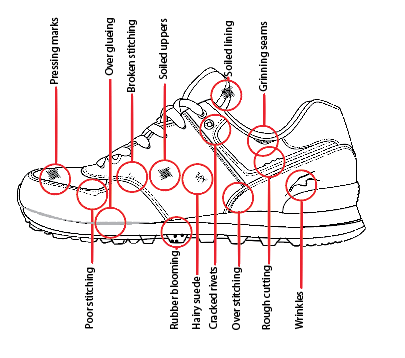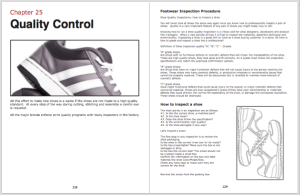Shoe Quality Inspections: How to Inspect a Shoe
 Warning: After you learn the skills of footwear quality control you will never look at shoes the same way again. Shoe quality inspection is a critical skill for a shoemaker to master, as footwear construction quality is a very important feature of any shoe you may make, buy, or sell. In this article, you will learn the basic process of footwear quality control in the shoemaking industry
Warning: After you learn the skills of footwear quality control you will never look at shoes the same way again. Shoe quality inspection is a critical skill for a shoemaker to master, as footwear construction quality is a very important feature of any shoe you may make, buy, or sell. In this article, you will learn the basic process of footwear quality control in the shoemaking industry
Knowing how to run a shoe quality inspection is a critical skill for shoe designers, developers, and product line managers. When a new sample arrives it’s critical to inspect the materials, assembly technique, and workmanship. You must know the correct footwear inspection procedure.
How to check the quality of sneakers in a store
Knowing how to inspect a shoe is also a great skill to have as a shoe buying customer in a store. You don’t need any special tools or lots of time. In just a few seconds you can quality check a new pair of sneakers in a store without damaging the shoe or hassling the store employees. If you see a problem pick a different pair. Here is how to grade and inspect a shoe like a professional.
Definition of Shoe inspection quality “A”, “B”, “C” – Grades
A grade shoes:
Shoes without any functional defects or cosmetic defects that will impair the marketability of the shoe are A grade. These are high-quality shoes, they look good and fit correctly. An A grade must follow the production specifications and match the approved confirmation sample.
B grade shoes:
Shoes without any major functional defects and which will not cause injury to the person wearing the shoes are B grade. B grade shoes may have cosmetic defects, production mistakes, or workmanship issues that cannot be properly repaired. These B grade shoes will be discounted and/or diverted to markets more tolerant of cosmetic defects.
C grade shoes:
C grade shoes have major functional defects that could cause injury to the wearer or major cosmetic defects that cannot be repaired. Shoes are also considered C-grade if they have poor workmanship or material defects that could shorten the normal life expectancy of the shoe, or damage the companies reputation. These shoes should be destroyed.
Shoe quality checklist: How to inspect a shoe:
The main points in a shoe inspection are as follows:
#1. Is this the correct shoe, a matched pair?
#2. Is the shoe clean?
#3. Does the shoe follow the specification?
#4. Is the workmanship of high quality?
#5. Is the shoe damaged in any way?
How to check the quality of a sneaker
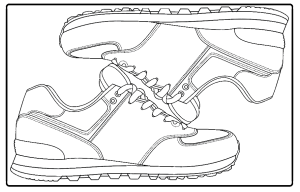 The first step of your shoe quality inspections will be to review the shoe packaging. Is the shoe in the correct inner box for its model? Is the box presentable? You should inspect the box to ensure it is not damaged or dirty. Is the box the correct size? The shoe should not be crushed inside a small box. Confirm the information on the box end label matches the shoe Color/Model/Size. Check any hangtags to make sure they are correct for the shoe.
The first step of your shoe quality inspections will be to review the shoe packaging. Is the shoe in the correct inner box for its model? Is the box presentable? You should inspect the box to ensure it is not damaged or dirty. Is the box the correct size? The shoe should not be crushed inside a small box. Confirm the information on the box end label matches the shoe Color/Model/Size. Check any hangtags to make sure they are correct for the shoe.
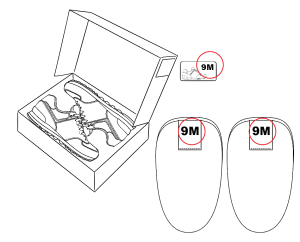 Remove the shoes from the packing box.
Remove the shoes from the packing box.
Do you have a left and right?
Are the shoes the same size and color?
Check the shoe tongue label information –
I know this sounds crazy but in the factory, it’s not hard to put a right size 7 and a left size 7.5 into the same box.
Holding the shoe, place the pair of shoes bottom to bottom.
Check them for symmetry. Does the pair really match in length? The size marks match but are they the same length?
Key shoe quality issue: Symmetry
Now, holding the shoe from the bottom, roll the uppers together side by side.
You are now checking the alignment of the shoe parts. Starting from the front, roll the shoes to align the parts, toe caps, vamps, overlays, eye stays, and eyelets.
While you have the uppers side by side, compare the finish and colors of each part.
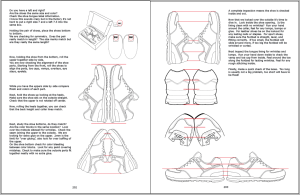
Next, hold the shoes up, looking at the heels. Make sure the shoes sit on the outsole straight. A shoe inspector checks to confirm the upper is not rotated off-center.
Now, rolling the heels together, check that the back height and collar lines match.
At this point, study the shoe bottoms. Do they match? Are the color blocks in the same location? Look over the midsole sidewall for wrinkles. Check the seam joining the upper to the outsole. Look out for any extra glue on the upper. 2mm is the limit for “over gluing.” Also, look for over buffing of the upper.
On the shoe bottom, check for color bleeding between color blocks. Look for any paint covering mistakes. Check to make sure the outsole parts fit together neatly without any extra glue.

Footwear Inspection: Look inside!
Complete shoe quality inspections check each side inside and out. Now that we looked over the outside, it’s time to dive inside because a great looking shoe with defects inside is not salable. Look inside the shoe opening, is the lining clean and without wrinkles? Run your hand around the collar, feel for any lump, bumps, or glue. For leather shoes, be on the lookout for any lasting nails or staples. For sports shoes, make sure the footbed is straight, level, and fitting correctly. If the footbed is too small, it may slide around, too big, and the footbed may wrinkle or curl.
Next, inspect the tongue lining for wrinkles and lumps. Run your hand down inside to check the vamp and toe cap from inside. Feel around the toe along with the footbed for lasting wrinkles. Feel for any rough stitching inside.
Finally, make a quick check of the laces. You need to adjust the shoelaces if too long or too short, too long is much better than too short.
Common Shoe Quality Problems
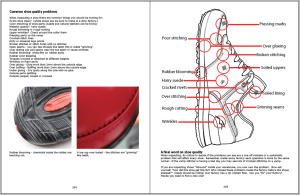 Quality Problems from “How Shoes are Made”
Quality Problems from “How Shoes are Made”
When you run shoe quality inspections, there are everyday things you should be looking for. You can call this the common shoe quality defect list. Is the shoe clean? (White shoes can be hard to make inside a dirty factory.) Is the color matching of shoe parts correct, (suede and natural leathers can be tricky.) Material quality? Is the suede hairy? Rough trimming or rough cutting? Upper wrinkles? Make sure to check around the collar foam.
Final Word on Shoe Quality Inspections
When inspecting, it’s critical to decide if the problems you see are a “one-off” mistake or a systematic problem that will affect every shoe. It’s vital to know that inside the factory, the same worker completes an entire operation. If the vamp stitcher is having a bad day, you may see lots of crooked stitching on a vamp.
Finally, when you check shoe quality inspections “inbound” inside your warehouse, you already own the problem. Ask yourself, how did this shoe get this far? What is the footwear final inspection process? Who missed these problems inside the factory before the shoes shipped? Heads should be rolling! Your factory has a quality control system flaw. Can you “fix” your factory? Maybe you need to find a new one?
You can learn more about shoe quality and shoe inspection procedures! Check out Chapter 25 on quality control in the book How Shoes are Made. You will learn how to check the quality of the sole of a shoe and how to inspect uppers. The book includes a footwear inspection checklist.
How Shoes are Made.
Check the quality of sneakers
How to Inspect a Shoe: Vans Old Skool
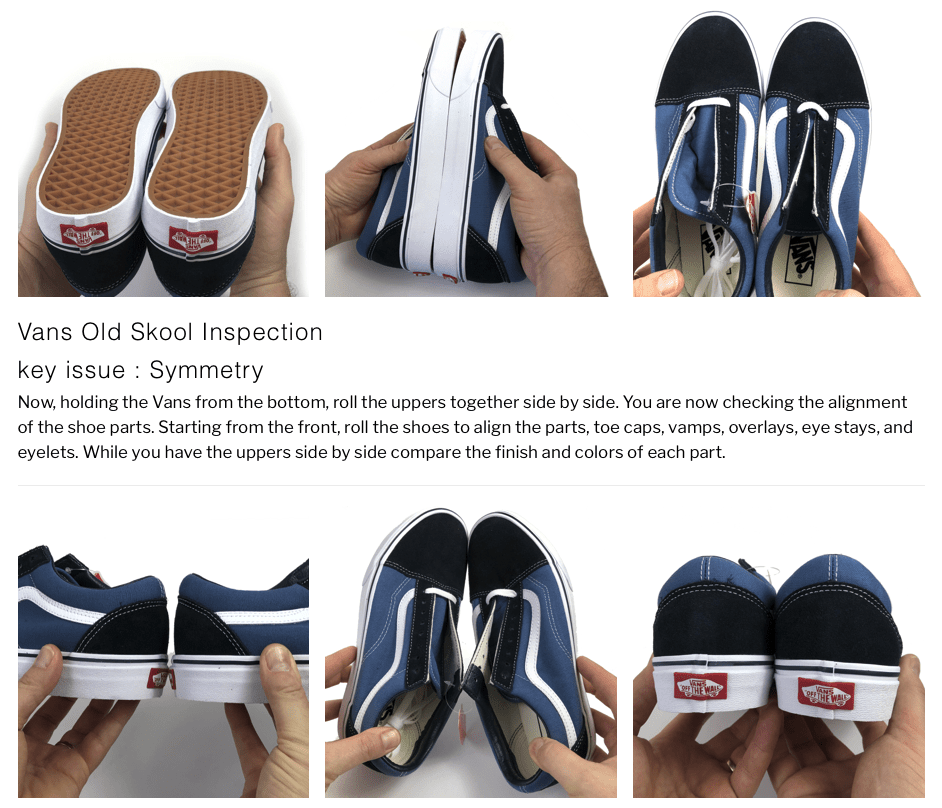
Read More: Complete vans inspection

